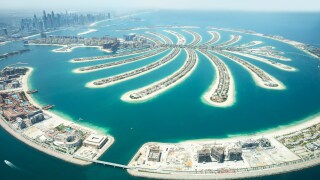During the global financial crisis of 2008 sustainability became a prominent topic for businesses looking to address and reduce their overheads. It dropped off the agenda somewhat as those businesses worked to keep their heads above water, however today; it is not only back on the corporate rollcall but also in the data centre space is defining future corporate strategies.
Schneider Electric’s UK Vice President, Marc Garner says the colocation sector is no exception. Far from starting from scratch, there have been some massive improvements over the last 10 years in terms of the efficiency of data centres, their operations and how it all works.
Some would argue that it has plateaued a little bit because of the benefits the industry has already seen and the applications that they have already put into their data centres. However, Garner says it is time now for that next step.
“It is becoming more and more relevant in day-to-day life and it is far more talked about in the mainstream media now. With that, there is a public perception and corporate perception that then flows down into supply chains and all these things are starting to drive this renewed focus in the push for sustainability,” he adds.
“Schneider is heavily focused on what is driving the market and what is driving us to new levels of sustainability. The World Economic Forum identified 15 key risks and the top risks were linked to the climate crisis.
“The investor community is starting to drive towards only investing in assets and companies that have a strong sustainability statement. They are moving away from investing in companies that have a higher sustainability risk.”
Metrics to inform resiliency are a significant component of sustainability best practice with attention to how effectively data centre facilities are using power, water, and other resources.
“Our customer base, the internet giants, the people that were driving the tenants within the data centre market, and the commitments that they are starting to make, are the assets that they are making into the data centre community,” says Garner.
“Schneider has worked with a company called 451 Research, and together we have produced a report that looks at sustainability within our data centre sector, and looking at where the customers are asking us to go as a sector. Also, trying to get a benchmark of what sustainability looks like today and what it is going to look like in the next three years.”
What sustainability will look like in the next three years is currently the million-dollar question.
According to a recent report authored by Schneider, 57% of respondents believe efficiency and sustainability will be highly important competitive differentiators in three years, a large increase from the current reading of 26%.
“If you look at where we are today and what is being asked of us today, the current level of commitment within the multi-tenant data centre community is being focused on. Only around 43% of all the data centre operators have a strategic sustainable plan to improve their sustainability as a business,” he says.
“The other 57% have some actions in place but they are not at that strategic level working out how they can drive these stainability measures. That is the big challenge now, how do we start to take that 43% and turn it into 60, 70 and 80%? That is the challenge for the next three years.”
Garner also mentions that there is a distinct gap between what the tenants themselves are asking for and what the multi-tenant data centres operators can commit to at the moment.
He adds: “97% of all tenants are looking for contractual agreements around sustainability. There is a real gap between what has been done and what can be done.”
The possibility
Metrics to inform resiliency are a significant component of sustainability best practice with attention to how effectively data centre facilities are in using power, water, and other resources.
Effective product maintenance and modernisation is essential to extending and optimising the lifecycle of a data centre facility along with the use of DCIM and software to predict and monitor system operations and resource efficiency.
“There are still huge opportunities to become more sustainable as an industry and there are multiple ways of how that can be done. One way is reducing: how do we become more efficient as an industry in terms of our operations, how we build, in terms of the technology we put into our data centres,” he says.
“A key factor in all of this is data. We have to get to a point where we take the data that we have and turn it into insights and actions,” he adds.
“Then take those actions and make sure that there is a regular and consistent cadence that happens on a weekly, monthly or even daily basis to elevate sustainability into boardroom level discussions or to the point where it is at a level playing field to resilience within the requirement of a data centre. My feeling is it is not quite there yet.”
What needs tackling first?
Although Schneider Electric does not operate data centres, the company is a key player in their design and construction.
Garner says that there are a few places to start in the race to a more sustainable sector and the supply chain – from start to finish – has a huge part to play.
“Every supplier of equipment and services drives an embedded carbon footprint into the data centre itself and then there's an ongoing carbon footprint and efficiency that comes on the back of that. Schneider Electric is driving carbon neutrality by 2025. We improved our ambition, which was originally set to 2030 at the start of this year,” he reveals.
“Based on the new technologies that are coming to market and how we adopt those driving things like our fleet to more electric, rather than traditional fuels. We are also putting an end to SF6 gas in our equipment.
“By 2025, there'll be no more SF6 gas used within our equipment. The big push that we're starting to make now is around our driving our supply chains to become net-zero by 2050, as for every product we could use, there are materials and equipment that goes into that, and we need to drive behaviour through our supply chain to make that improvement.”
The same can be said for the data centre industry because clients of some big corporate organisations are starting to ask for more from their data centre providers on the sustainability front.
“The ask that comes from there will flow down into the contractor market and the OEM market, thus there is a need to step up as a supply chain to be able to see those significant improvements in the future,” says Garner.
Challenges
Schneider’s report found that 97% of providers have a few or all of their customers looking for contractual commitments to sustainable practices but Garner says that the adoption of new technology stands out as a key challenge.
He adds that it will also stand out as a new opportunity to add efficiency to the data centre, which will become more prominent over the next four or five years.
“Many of the internet giants are talking about self-build for wind farms and renewable energy sources, which will equally start to flow down and interject into the other sectors and that adoption of technology will start to flow into that,” he concludes.
“The data centre community has a huge role to play in sustainability as a whole. Industry 4.0, be it the automation of industrial applications or artificial intelligence, is starting to drive efficiency within everyone's day-to-day lives and more automation around power grids and the distribution of where energy comes from.
“All of this requires automation, technology, and data to be able to provide it, and data centres themselves will be a core enabler of digitalisation.
“As microgrids and smart grid start to become more prevalent, data centres will be a massive supporter of the subsequent sustainable benefit benefits that come off the back of it.”





